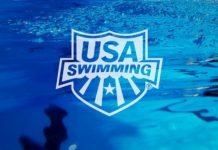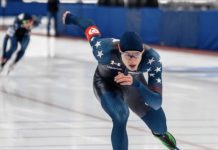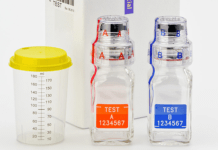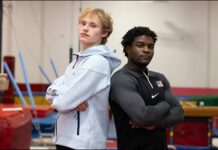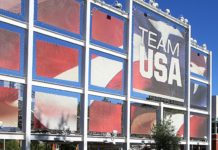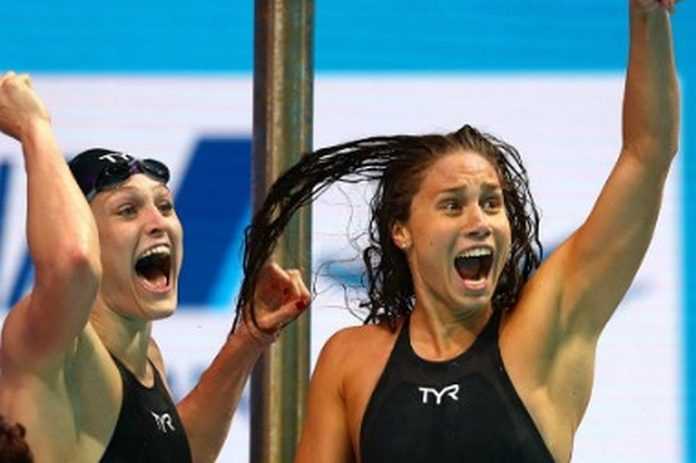Fans of U.S. swimming were a little concerned after the 2015 World Championships, when the performance of the American team dipped by 20% from two years prior.
Even though the U.S. won the most medals with 23, the output declined from 29 at the 2013 Worlds, with a team that was selected from the U.S. nationals in 2014, more than a year before the 2015 Worlds.
There were swimmers who were simply not as ready in 2015 as they were the year before. Moreover, the 2015 U.S. Nationals actually overlapped with the 2015 World Championships and some of the marks in the U.S. meet would have won medals at the ongoing Worlds!
So some wondered whether U.S. Swimming’s continued practice of picking the 2019 World Championships team from the 2018 Nationals was a good idea. We won’t know until next year, but we can use a close measuring stick by comparing the winning times at the U.S. Nationals from 2017 with those in 2018.
After all, the U.S. team selected at the 2017 Nationals was one of the best ever, producing a stunning 38 medals (18 gold, 10 silver, 10 bronze), with no other country winning more than 10. Perhaps this was simply a bad year for the rest of the world, but the American team was stunningly good.
So how did the 2018 national champs compare to the 2017 world-beaters?
Pretty well … no, very well … really, they were terrific! Consider:
- 2017: 8 world-leading marks, two American Records
- 2018: 8 world-leading marks, one World Record, three American Records
And when looking event by event, you can see that the 2018 winners more than held their own against the 2017 stars who went on to dominate the World Championships (AR = American Record; WR = World Record; fastest time between the two years is in CAPS):
Men
50 m Free:
2017: 21.53, Caeleb Dressel
2018: 21.49, MICHAEL ANDREW
100 m Free:
2017: 47.96, NATHAN ADRIAN
2018: 48.08, Blake Pieroni
200 m Free:
2017: 1:45.03, TOWNLEY HAAS
2018: 1:45.70, Andrew Seliskar
400 m Free:
2017: 3:44.43, ZANE GROTHE
2018: 3:46.53, Zane Grothe
800 m Free:
2017: 7:50.43, Clark Smith
2018: 7:44.57, ZANE GROTHE
1,500 m Free:
2017: 14:59.73, True Sweetser
2018: 14:48.89, JORDAN WILIMOVSKY
50 m Back:
2017: 24.41, Justin Ress
2018: 24.24 AR, RYAN MURPHY
100 m Back:
2017: 52.71, Matt Grevers
2018: 52.51, RYAN MURPHY
200 m Back:
2017: 1:54.30, Ryan Murphy
2018: 1:54.15, RYAN MURPHY
50 m Breast:
2017: 26.88, Kevin Cordes
2018: 26.84, MICHAEL ANDREW
100 m Breast:
2017: 58.74 AR. Kevin Cordes
2018: 59.38, MICHAEL ANDREW
200 m Breast:
2017: 2:07.41, Kevin Cordes
2018: 2:07.28, JOSH PRENOT
50 m Fly:
2017: 23.05, Caeleb Dressel
2018: 22.93, MICHAEL ANDREW
100 m Fly:
2017: 50.87, Caeleb Dressel
2018: 50.50, CAELEB DRESSEL
200 m Fly:
2017: 1:54.47, Jack Conger
2018: 1:54.63, JUSTIN WRIGHT
200 m Medley:
2017: 1:56.51, Chase Kalisz
2018: 1:55.73, CHASE KALISZ
400 m Medley:
2017: 4:06.99, CHASE KALISZ
2018: 4:08.25, Chase Kalisz
Women
50 m Free:
2017: 24.27, Simone Manuel
2018: 24.10, SIMONE MANUEL
100 m Free:
2017: 52.81, Mallory Comerford
2018: 52.54, SIMONE MANUEL
200 m Free:
2017: 1:54.84, Katie Ledecky
2018: 1:54.60, KATIE LEDECKY
400 m Free:
2017: 3:58.44, KATIE LEDECKY
2018: 3:59.09, Katie Ledecky
800 m Free:
2017: 8:11.50, KATIE LEDECKY
2018: 8:11.98, Katie Ledecky
1,500 m Free:
2017: 16:01.02, Leah Smith
2018: 15:55.68, ASHLEY TWICHELL
50 m Back:
2017: 27.63, HANNAH STEVENS
2018: 27.70, Olivia Smoliga
100 m Back:
2017: 58.57, Kathleen Baker
2018: 58.00 WR, KATHLEEN BAKER
200 m Back:
2017: 2:06.38, KATHLEEN BAKER
2018: 2:06.43, Kathleen Baker & Ragan Smith
50 m Breast:
2017: 29.66 AR, LILLY KING
2018: 29.82, Lilly King
100 m Breast:
2017: 1:05.95, Lilly King
2018: 1:05.36, LILLY KING
200 m Breast:
2017: 2:21.83, LILLY KING
2018: 2:22.06, Micah Sumrall
50 m Fly:
2017: 25.69, Kelsi Worrell
2018: 25.48 =AR, KELSI WORRELL-DAHLIA
100 m Fly:
2017: 57.38, Kelsi Worrell
2018: 56.83, KELSI WORRELL-DAHLIA
200 m Fly:
2017: 2:07.60, Hali Flickinger
2018: 2:06.14, HALI FLICKINGER
200 m Medley:
2017: 2:09.57, Melanie Margalis
2018: 2:08.32, KATHLEEN BAKER
400 m Medley:
2017: 4:33.86, LEAH SMITH
2018: 4:34.80, Ally McHugh
When you total it all up, the 2018 Nationals winners “beat” the 2018 winners – many of whom were the same people – by 11-6 in the men’s races and 10-7 in the women’s races for an overall edge of 21-13 or in 62% of the events.
That’s pretty impressive for the 2018 winners against the 2017 finishers, who spearheaded a 38-medal explosion for the U.S. at the World Championships, the most in this century!
A lot of the names were the same, but there were also breakthroughs for new stars like four-event winner Michael Andrew (19), 200 m Free winner Andrew Seliskar (21), 200 m Fly champ Justin Wright (22) and 200 m Back co-winner Ragan Smith (16!).
Plus, let’s note the open-water veterans who impressively won the 1,500 m Frees: Jordan Wilimovsky and Ashley Twichell.
There were also other factors to consider in evaluating the two sets of marks. First is that the 2018 Nationals were a held a month later than in 2017, because of the early dates of the 2017 World Championships. Also worth noting is that the 2017 Nationals were held in an indoor pool in Indianapolis, while the 2018 meet was held outdoors in hot conditions in Irvine. Some of the swimmers noticed that while the outdoor set-up this year was no disadvantage from a wind perspective, the high air temperatures did increase the water temperature beyond what is normally experienced.
Maybe these balance out.
The next chance to compare times comes in the next two weeks, as the European Championships in Swimming are in Glasgow, Scotland from 3-12 August and the Pan-Pacific Championships – open to just about everyone else – are in Tokyo from 9-12 August.
The U.S. Worlds team for 2019 will be named after the Pan-Pacs are concluded.
Looking ahead, the 2019 FINA World Aquatics Championships will be held in Gwangju (KOR) from 21-28 July, with the swimming during the past 10 days, a little earlier than the 2015 World Championships in Kazan (RUS), where the U.S. performance was not on par with its 29-medal efforts in 2011 and 2013.
Frankly, it doesn’t make a lot of sense to pick a 2019 World Championships team a year before, but that’s the way U.S. Swimming has done it. But in terms of the proven ability of those swimmers to perform – at least in 2018 – the U.S. will have a very competitive team in Gwangju in a year’s time.
And let’s not forget, the 2020 Olympic team to compete in Tokyo will be selected from an Olympic Trials event in Omaha, Nebraska from 21-28 June, just about a month ahead from the start of the swimming events at the Games. No early selection there.
Rich Perelman
Editor







